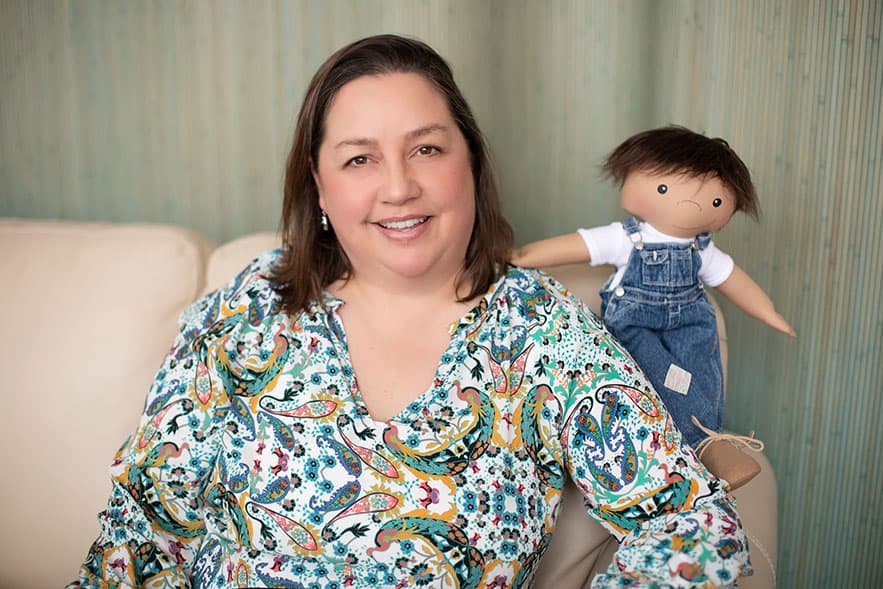Like a children’s fairy sent by some magic force, former social worker Amy Jandrisevits keeps transforming the lives of little people who are struggling with their differences. How? By crafting dolls that look just like them – perfect in their imperfection. The pediatric oncology ward where Amy was working was full of kids who had no chance of playing with a toy they could relate to. So, she took a needle and thread in her own hands and made a doll for a friend’s daughter who had had her limb amputated. This is how “A Doll like Me” came to life, in 2014. It was the first time ever that one little girl hugged a wonderful toy with no leg, made in her image. So far, more than 300 dolls have brought joy to kids in – Israel, the UK, Australia, Canada, Egypt, South Africa, and all the way to Venezuela. A caring mom’s hobby dispelled sadness like magic, making all those scars, spots, and broken limbs seem more friendly and acceptable.
That is why “A Doll like Me” deserves worldwide attention.
Dear Amy, update us on what have you been engaged in the past few weeks? It seems like your story has been taken to a whole new level.
I am actually incredibly surprised at how, in just a few short months, this story has evolved.
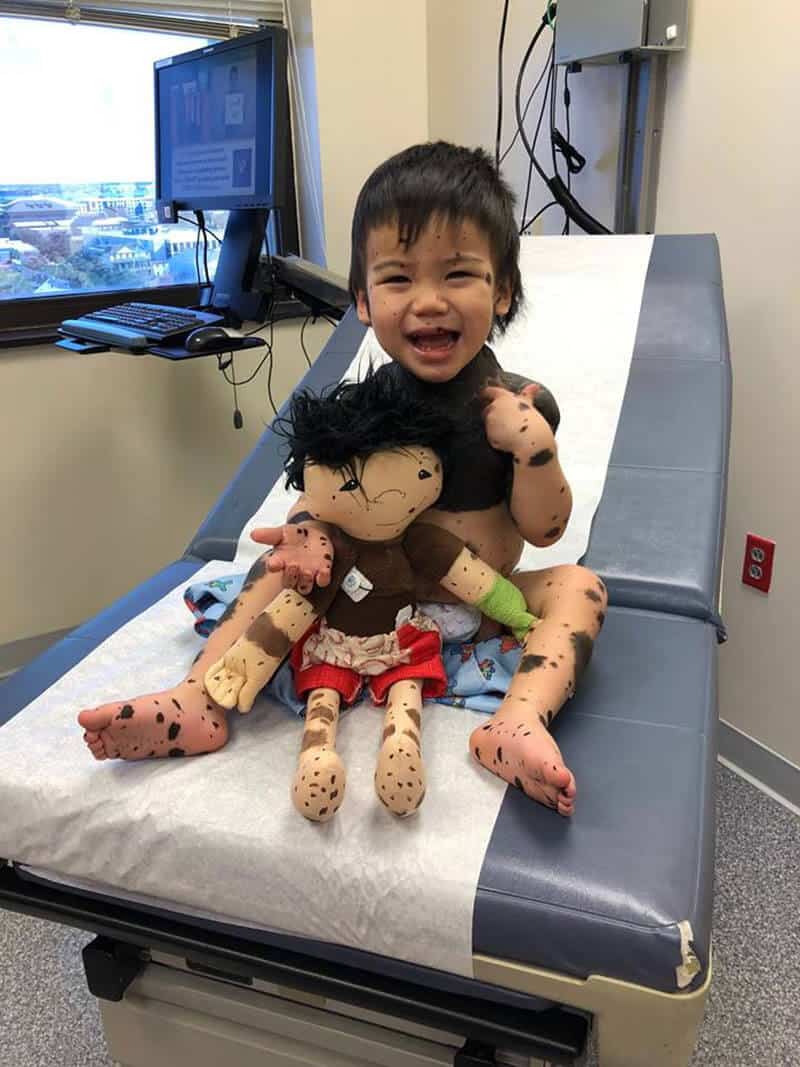
I think it changed from “a mom makes dolls to represent children’s differences to “a former social worker challenges the toy industry and our perceptions.” I think that my role has evolved into one of advocacy, which is wonderful.
I always tell my own kids that if they ever have an opportunity to change the narrative for a group of people (in my case, kids!) they need to use that platform in a positive way. My dolls have gained worldwide attention, and it’s very surreal!
Share with us some of the most touching situations or scenes you witnessed five years ago that inspired you to start making your unique dolls?
So I started doing this four years ago; and prior to that, I was a pediatric oncology social worker (though I’d taken time off to stay home and raise my kids). At that time, I was acutely aware that there is an incredible gap in the toy market…namely dolls. The vast majority of kids are not able to walk the toy aisles and see themselves on the shelves.
There are kids with various skin tones, kids with limb differences, kids with scars and birthmarks. And when we think about the importance of dolls in play therapy, we can assume that outside of a play therapy situation, dolls have an incredible role also.
Kids need to look into the sweet face of a doll and see their own. It’s also very empowering to know that a doll was created in your image! For many of these kids, it’s the first time they’ve seen anything in their image, and that is very powerful.
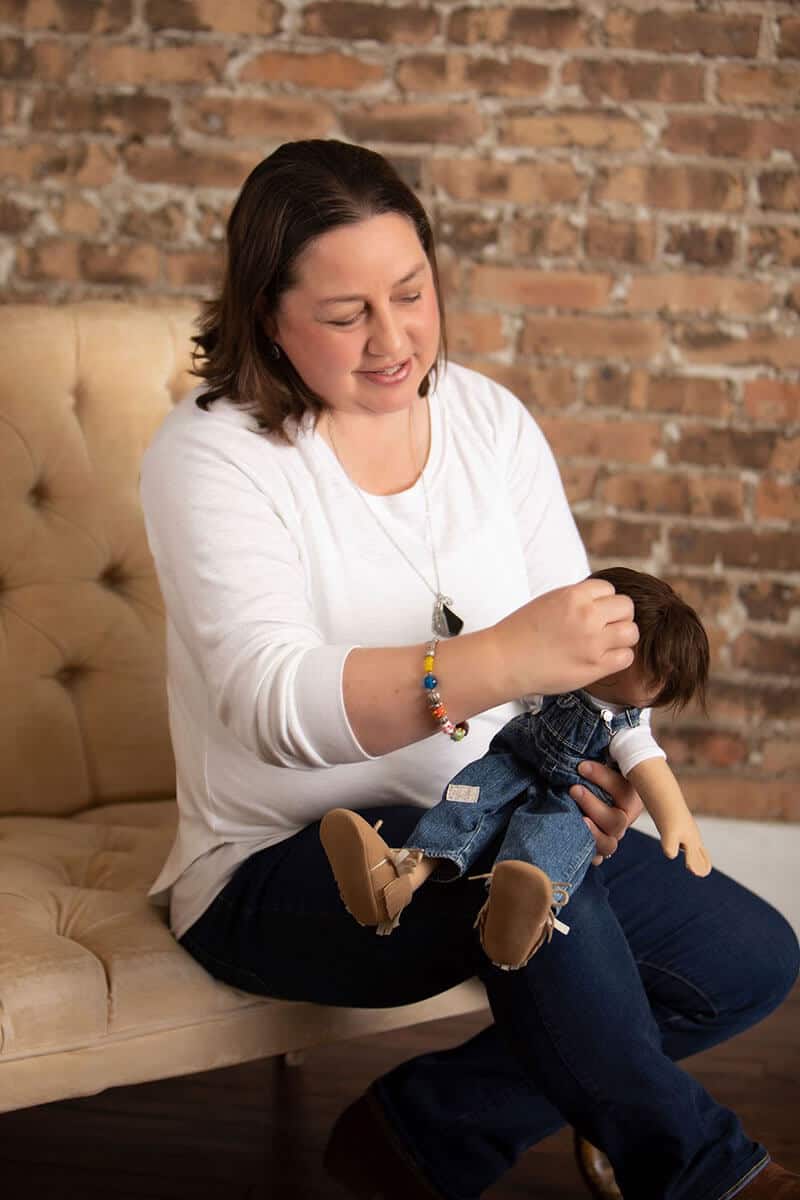
“We underestimate the power of seeing yourself in a doll, which is the closest toy to a human likeness.”
Do you still work full-time, and how much time do you spend making dolls on a daily basis?
Technically, I was working as a full-time mom before starting A Doll like Me. So I literally sew these at my dining room table and assemble them on my kitchen counter. These dolls are very much a part of my family’s life. I usually spend about three hours (broken up) a day working on them, sometimes more if I’m lucky! My youngest is three, so that makes it hard to do uninterrupted work. And, obviously, answer emails!
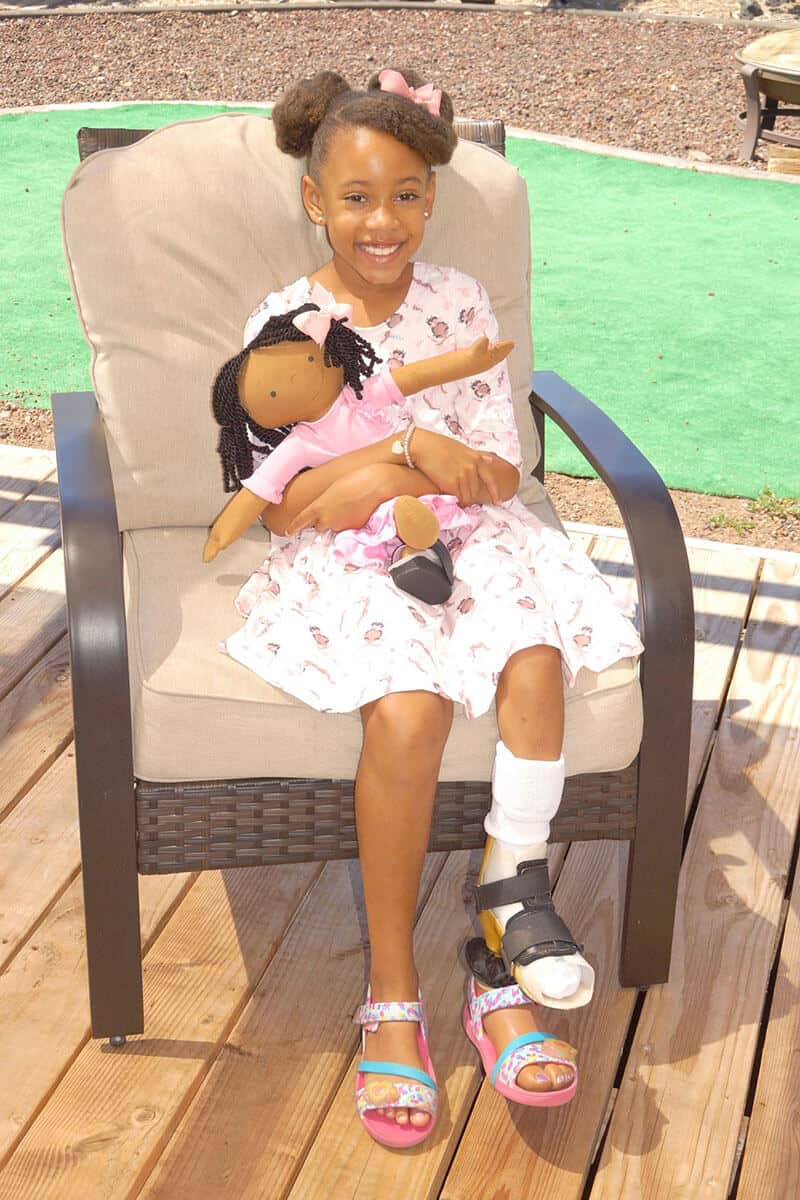
Your precious little pieces of art are delivered worldwide. Where have the most distant orders come from?
I love that you said “pieces of art” because truly every child is just that. I just mailed a little guy to Israel on Saturday. I’ve also sent dolls to the UK, Australia, and Canada, of course. But also to Egypt, South Africa, even Venezuela. With exposure now worldwide, it shows you exactly how desperate people are to have their children represented.
We do kids such a disservice in this regard. We (the global community) have put this incredible burden on children with how they are “supposed” to look, and it is reinforced by who shows up in the faces of toys, who is shown in advertisements, who appears in movies and cartoon characters.
I believe that we underestimate the power of seeing yourself in a doll, which is the closest toy to a human likeness.
Do you remember any specific reaction or comment of a child after receiving a doll – one that you will never forget?
That video is incredibly powerful because it is quite literally the first time she had seen herself in a human likeness, and it moved her to tears (and everyone else who watches this!).
How much time does it take to craft one doll, and what is the most difficult part of the process?
Most dolls take about six hours, but some of the more complicated ones can take 8 or 9 hours! Honestly, the most difficult part is trying to capture the difference (the reason why I’m making the doll) in an accurate way. I really try to make it as much like the person as I can. I think that’s important, not just for the child, but to help normalize differences.
We aren’t all alike, and the more we see and talk about these differences, the more “normal” they become. After all, these are just kids. I think people would be surprised to know that they like the same things and feel the same things. This is an opportunity to celebrate what makes us unique and find beauty in those things.
How many dolls have you made so far?
Probably 350.
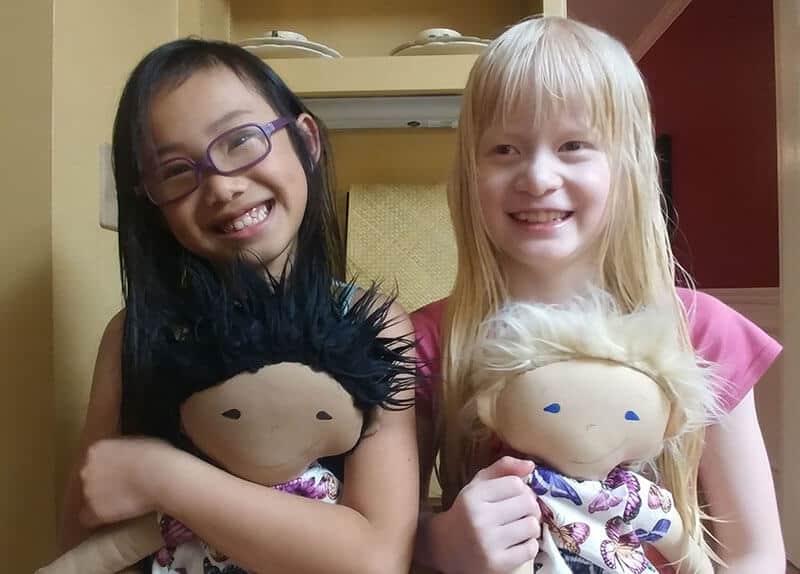
Little people can do big things!
Do you think there is a chance for you to cooperate in some way with institutions
like children’s hospitals, or social and child care institutions, to incorporate creative programs with your dolls as part of recovery procedures?
I already have relationships with several doctors and our local hospital. I’ve had requests from medical staff and teachers, because they do realize the importance of a doll. First and foremost, a doll is comforting. Medical situations can be so frightening for kids that lack the cognition and verbal ability to comprehend. It’s even scary for adults!
So there’s a comfort. Then there’s medical play, it’s so important for kids to gain control over their environment through play, especially medical play. And finally, there is something so powerful in seeing yourself in the sweet face of a doll.
How do you see your doll story in five years on a global scale?
For starters, I am working on becoming a nonprofit. I would love for our larger community to pay for these for the recipients. I think that providing these dolls for kids is a tangible way to show kindness. I think that the very strangers who these families feel are judgmental and not supportive could provide something so wonderful, it could literally change the tide for these families.
Additionally, my dolls’ being in the news has had a profound impact on perception (or I’m hoping it does!). For the first time, many of these kids are “the kid I saw on TV with the doll” and not “the kid with the arm or the kid with the spots.” It’s incredibly powerful.
I like to say that I’m changing the narrative for each kid one doll at a time. In fact, literally, as I am typing this, I got an email from a mom that says, “You are doing such a special and amazing thing for so many amazing little kids.” That is what I hope people will still be saying in five years.
And, again, I believe that my role has also evolved into dollmaker/advocate. I am privileged to take part in these stories and be a part of their lives so intimately. I am, also, thrilled to be even a small part of this discussion!
I am working with a few kids’ groups who either want to sponsor a doll (for a perfect stranger!) or want to make quilts that I can include. Kids need to understand that they also have immense power; and in targeting young people, we can quite literally change perceptions and representation. Little people can do big things!
In telling this story, you are also changing the narrative for these kids. That’s pretty incredible and so powerful.
I think we grossly underestimate the power of kindness. I think we ultimately want to do good but feel paralyzed by not knowing WHAT to do. That’s why I am so glad when people reach out to help me – either financially, by sewing clothes and quilts, or simply offering kind messages.
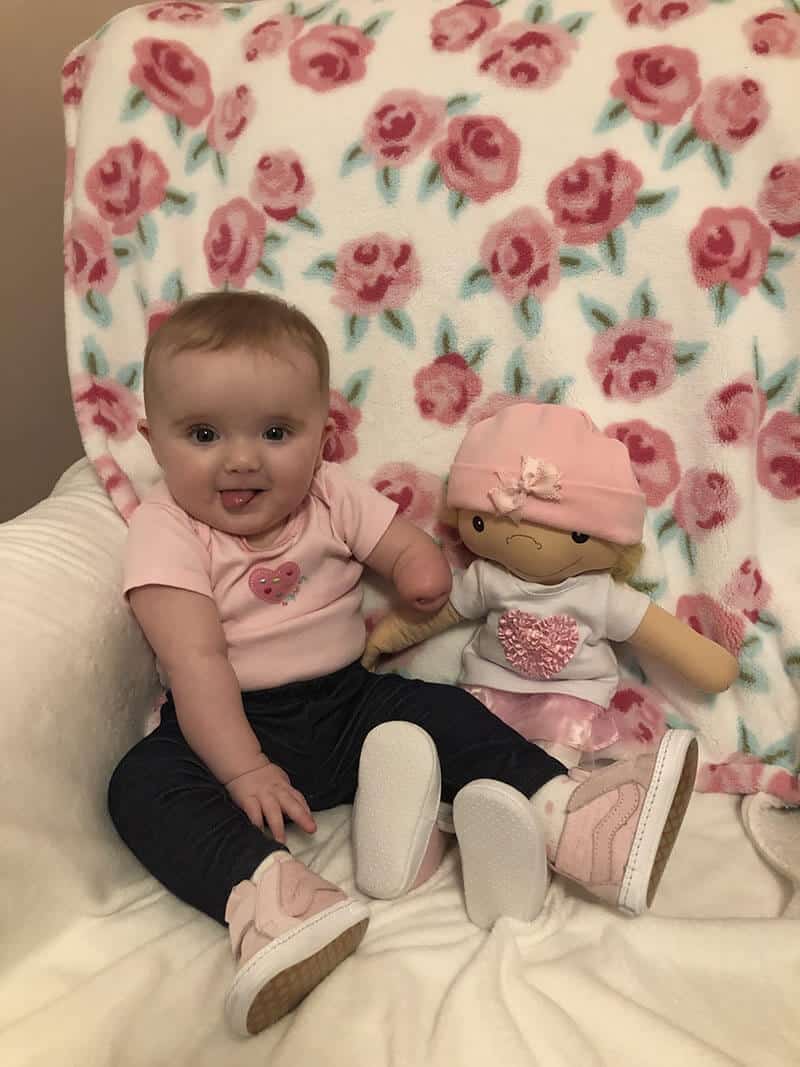
Many kids with physical differences cannot afford these dolls. Make them happy by donating.
Photo credits: Mortensen Photography, A Doll like Me
Support us!
All your donations will be used to pay the magazine’s journalists and to support the ongoing costs of maintaining the site.
Share this post
Interested in co-operating with us?
We are open to co-operation from writers and businesses alike. You can reach us on our email at [email protected]/[email protected] and we will get back to you as quick as we can.
